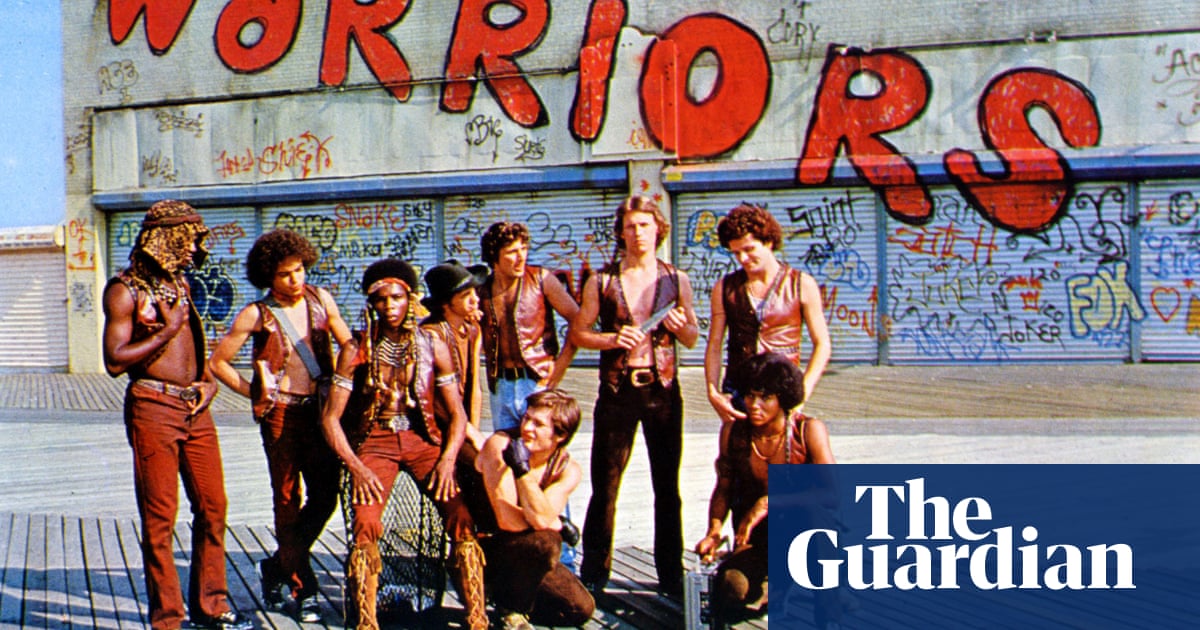For Miranda, the story of The Warriors resonates with the experience of being a New Yorker, of navigating the city’s diverse neighborhoods and potential dangers. “It’s a love letter to the origins of hip-hop,” he says, reflecting on the music and culture that have emerged from the streets of New York. The concept album captures the essence of the film’s gritty, suspenseful atmosphere while also reimagining it through a contemporary lens.
By transforming the all-male gang of the original story into a group of fierce and determined women, Miranda and Davis bring a fresh perspective to the narrative. This decision not only reflects their own values and beliefs but also serves as a commentary on the challenges and obstacles faced by women in male-dominated spaces.
Overall, The Warriors concept album is a bold and innovative project that pays tribute to the cult classic film while also exploring new themes and ideas. With a star-studded lineup of artists and a dynamic soundtrack, it promises to be a unique and exciting musical experience for fans of both the original movie and contemporary music.
“So there’s something very real about that moment, with Cyrus saying, ‘Can you dig it?’ I was like, ‘I can dig it!’”
Davis – whose plays include Angela’s Mixtape, which featured her aunt, the political activist Angela Davis, as a character – turned the truce into a dream of peace threaded throughout the album. The 1971 meeting, she points out, helped form “the cultural conditions that created hip-hop officially in 1973. There was a shift from being a gang that’s at war with other gangs to being a crew that is going to battle other crews as MCs, as great dancers, as graffiti writers, as DJs.” She sees the album as a “love letter to the origins of hip-hop”.
Collaborating with Davis gave Miranda a welcome contrast to Hamilton, “which I largely wrote alone, sweating, chronologically”. Working with Encanto’s soundtrack producer Mike Elizondo, they identified genres including ska, punk and R&B for each gang’s lyrics – and found a way to represent the Furies, who never speak. The skinhead Turnbull ACs from the Bronx are given a salsa sound. “While the Warriors were running, [record label] Fania was revolutionising salsa music all over the world. And those artists primarily lived in northern Manhattan and the south Bronx.”
There are several former Hamilton stars playing the Warriors, including Phillipa Soo, who was invited to record the demos. “It was all very secret,” she tells me. “And like a family reunion.” Hamilton alumni Sasha Hutchings and Jasmine Cephas Jones were there, as was Amber Gray whom Soo met on her first professional gig after drama school. Their shared history helped establish the bond between the seven-strong Warriors and their new recruit, Mercy, portrayed by Julia Harriman who, like Soo, had played Eliza in Hamilton opposite Miranda. Delineating so many different gang members was one of the main challenges. “Really great writers,” says Soo, “are able to encompass an idea, an important plot point or a character trait in a very short amount of time”.
In the movie, Luther was played by musical theatre star David Patrick Kelly, who based his portrayal on the New York Dolls after meeting them while working at the famous nightclub Max’s Kansas City. Kelly has a cameo on the album, playing a cop. Miranda tried to write rap verses for Luther “but the thinking was too ordered”. He sought a more chaotic energy. Davis suggested they use a metal singer, and Atlantic Records led them to the operatic growl of Tasmania’s Kim Dracula.
“I think everyone who listens to it goes, ‘What the fuck was that?’” laughs Miranda. Luther’s demonic number Going Down likens the stations on a New York transport map to dots in a Pac Man game, with him as a ghost hunting the Warriors down. (When Davis first watched The Warriors, she told Miranda: “This should be a video game.” As a superfan he was a step ahead. “It is,” he replied. “I play it!”)
The Warriors has such a cult following that there is even a marathon run by fans, tracing the gang’s route through the city. Miranda and Davis made their own way to the parks, subway stations and streets featured in the film – but took a daytime jaunt rather than an overnight trek.
“We made it all the way to Coney by sunset,” says Davis, who grew up in Berkeley, California: “I truly romanticised New York as a kid. This is the place where you go, like in the movie Fame, and dance on taxicabs.” Miranda was born in New York a year after the film came out. He recalls a golden age of 70s films made on location there, including Dog Day Afternoon and The French Connection. “If you want the love and peace flipside to The Warriors, watch Godspell – you see hippies singing about Jesus in the same places the Warriors were fighting.”
In the film, each gang has a signature outfit, from the baseball uniforms of the Furies to the Warriors’ leather vests worn over bare chests. When Miranda screened it at his film club, he put on the vest: “I had to go on a weeklong diet!” The big question is: will Miranda and Davis’s Warriors get all dressed up and hit the stage? Miranda thinks back to when Hamilton tickets were gold dust. With the album of The Warriors, he says, “you’re not getting the soundtrack to a show you can’t see. You are getting the thing we made. That feels enormously gratifying.” But he admits a theatrical version would be “enormous fun”, and they are open to the idea. All you boppers out there: The Warriors’ journey surely won’t end here.
